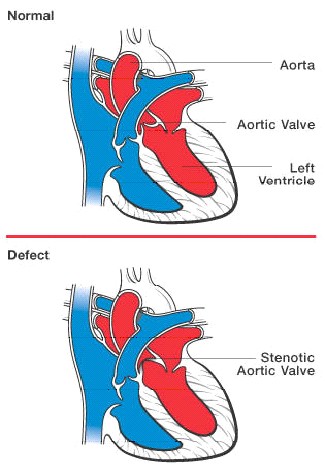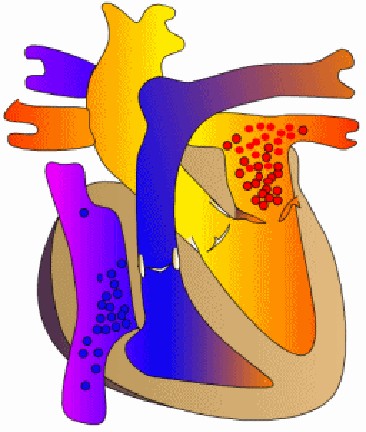Clinical Background
|
Malfunction of a heart valve occurs when the valve is incapable of fully opening or closing. Such a malfunction can occur due to calcification or fibrosis of the leaflets. In addition, the leaflets may be damaged by perforation, rupture, or stretching. Leaflet fusion, in which two or more leaflets are attached to each other, is a congenital defect that also causes problems with valves. A valve that fails to completely open results in stenosis (see figure 2) , and ultimately a reduction in the volume of blood flow. Symptoms of stenosis include fainting or weakness with activity, breathlessness, chest pain, and dizziness. These symptoms are relieved with rest, which lowers required perfusion rate to a level that can be accomodated by the compromised flow. A valve that does not completely close results in regurgitation, a reversion of the flow in the pulmonary system that the valve was supposed to prevent in the first place. Symptoms include rapid breathing, chest pain, and palpitations. In some cases of regurgitation, shortness of breath may be exacerbated by having the patient lie flat because in such a case, gravity does not contribute to the directional blood flow. The treatment for valve defects is replacement of the damaged heart valve. This is a major procedure that is done with well established methods of open surgery. The old valve is removed, and a new one is sewn into place. A replacement valve will consist of leaflets and a sewing ring by which the new valve is attached to the papillary muscles. Although the prosthetic heart valve appears to be a relatively simple device, there are several considerations that add complexity to its design and development. |
|

